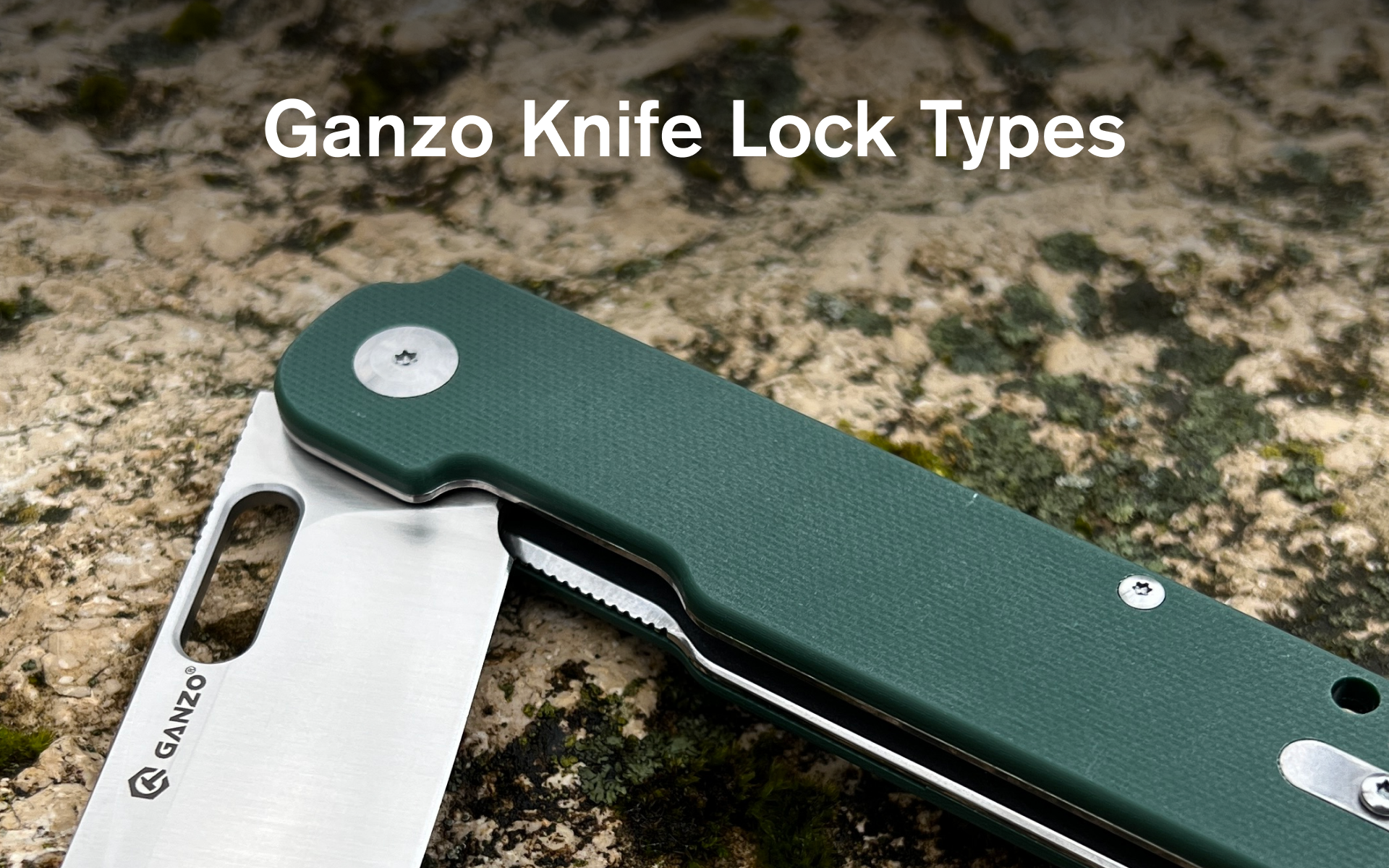
One of the biggest advantages of a folding knife is its compact size and convenience. It easily fits into a pocket, making it a reliable tool to carry every day. But folding knives weren’t always this advanced. If we go back in history, the first prototypes appeared in Ancient Rome.
Back then, simple folding designs were common and mostly used for eating. Bringing your own utensil was considered polite, while carrying larger fixed blades could even cause legal issues. Early folding mechanisms were primitive: the blade stayed open only thanks to friction and pressure while cutting. True lock systems and spring mechanisms came much later — and today, we’ll take a closer look at the modern options Ganzo knives use.
Main Lock Types Used by Ganzo
Over the years, different manufacturers have developed their own locking systems, constantly improving them. Ganzo relies on several proven mechanisms that balance safety, reliability, and ease of use.
Axis Lock
One of the most reliable systems when properly made. The blade is secured by a small steel bar that moves into a notch on the tang when the knife is opened. A spring hidden under the handle provides tension, keeping the bar in place.
- Pros: Smooth action, ambidextrous use, fast opening.
- Note: The quality depends on the blade’s machining and polish — the better it’s finished, the smoother it works.
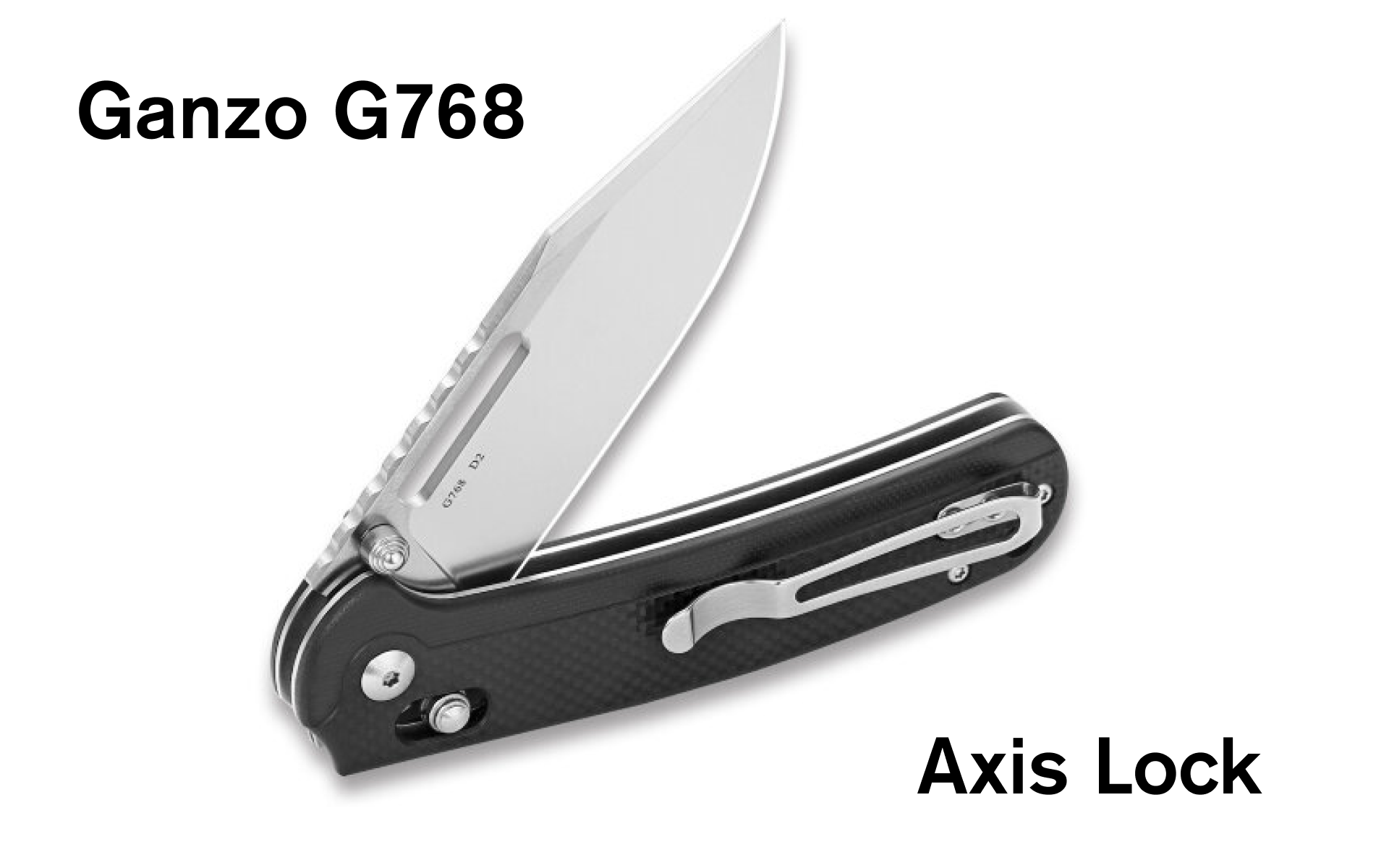
Liner Lock
Perhaps the most widely used lock today thanks to its simplicity and strength. A bent liner plate inside the handle engages the base of the blade to hold it open.
Perhaps the most widely used lock today thanks to its simplicity and strength. A bent liner plate inside the handle engages the base of the blade to hold it open.
- The liner can be an integral part of the handle or an attached plate.
- Thickness is less important than the steel’s hardness and strength.
- To close, simply push the liner aside to free the blade.
Advantage: Unlike Axis Lock, the blade cannot fold in on its own under impact — making it extremely safe.
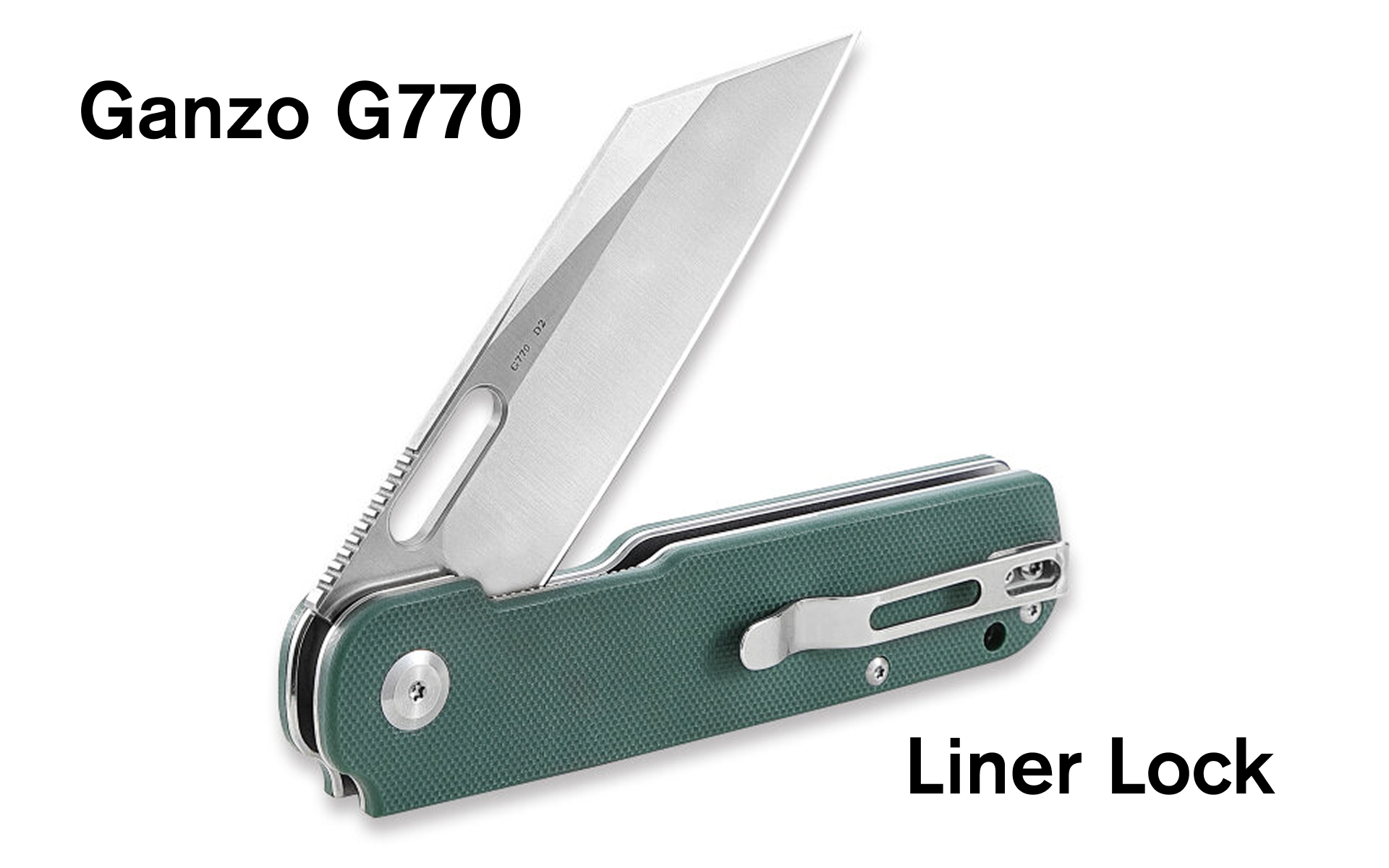
Frame Lock
A stronger variation of the liner lock. Here, the lock bar is actually part of the handle frame itself rather than an inner plate. Because of this design, frame locks are also called integral or mono-locks.
- Pros: Simple, strong, and very reliable.
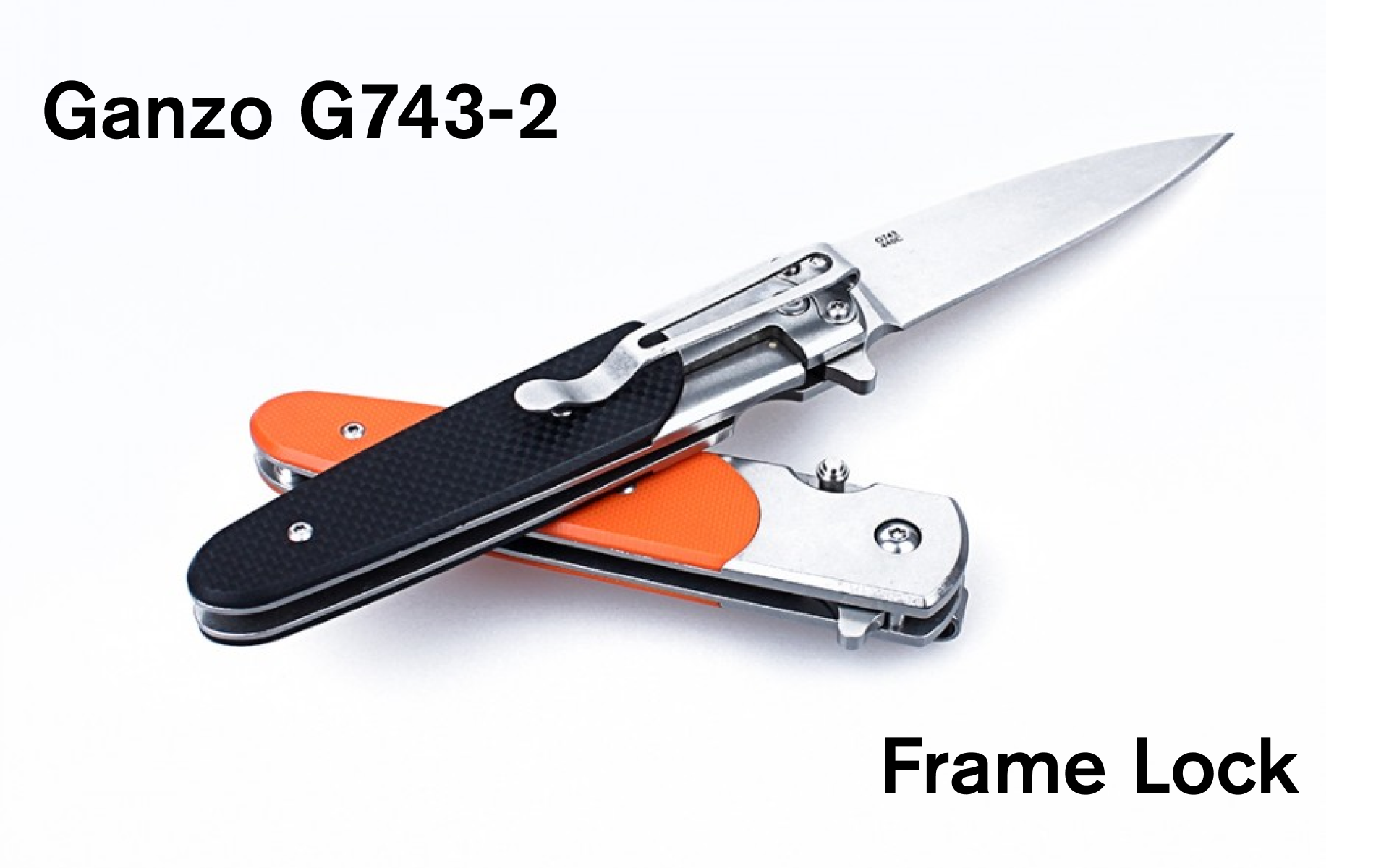
Back Lock
One of the oldest true lock systems (popular since the 1960s, following the earlier Virobloc collar lock from the 1950s). It is often used in traditional knives.
The system works with a spring-loaded rocker arm on the spine of the handle. When the knife opens, the arm snaps into a notch on the blade tang, holding it securely.
- Pros: Classic design, reliable hold.
- To close: Press the release on the back of the handle, which lifts the rocker and frees the blade.
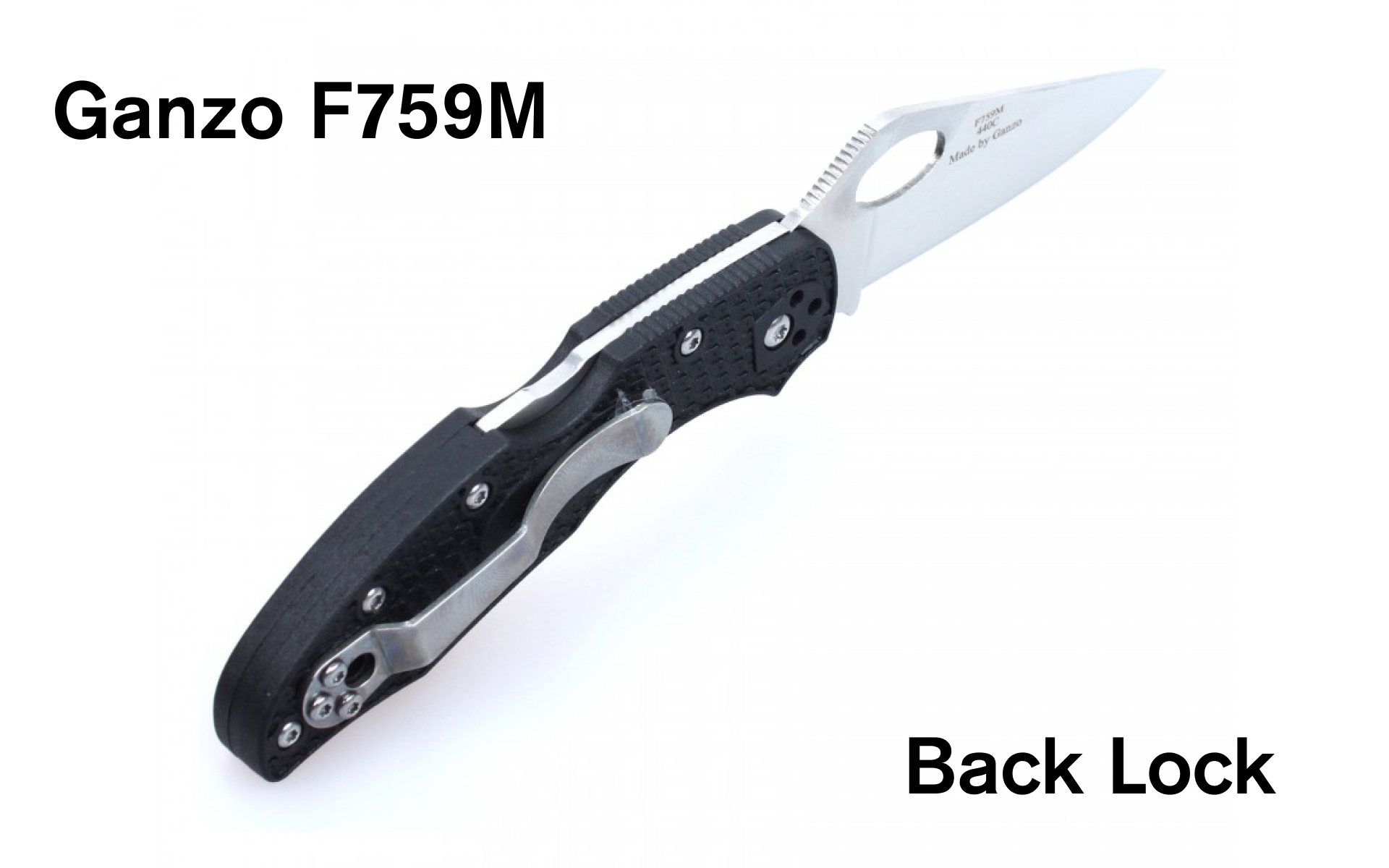
Button Lock
Originally designed for automatic knives, this lock allows quick one-handed operation. A button on the handle controls a spring-loaded plunger that fits into a notch on the blade, locking it open.
- The button is recessed into the handle to prevent accidental activation.
- Works like a “puzzle,” with the plunger fitting securely into place.
Advantage: Fast, easy, and safe when properly designed.
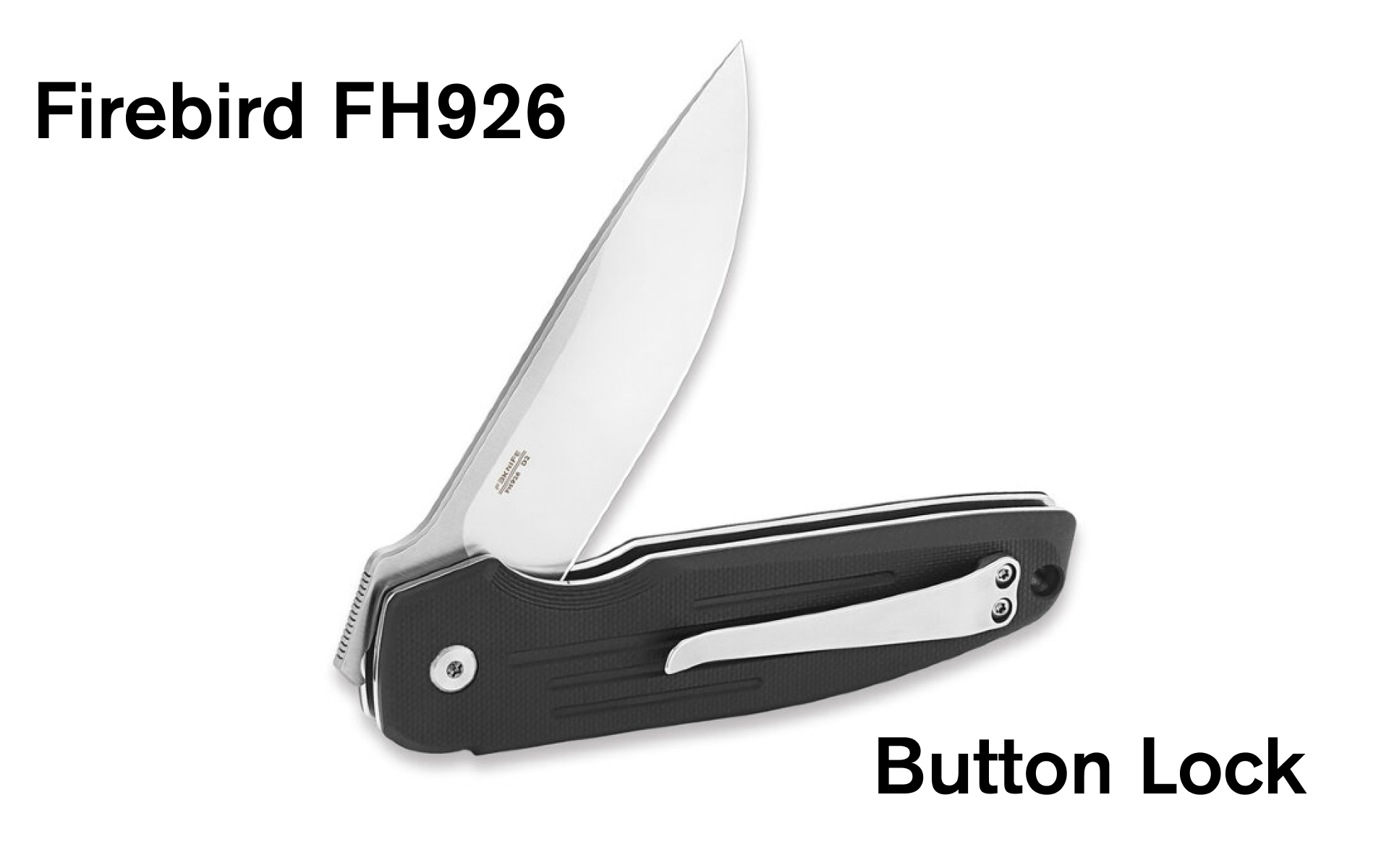
Final Thoughts
Ganzo knives use a variety of locking systems, each with its own strengths. Whether you value speed, ambidextrous use, or maximum reliability, understanding these mechanisms will help you choose the perfect model for your needs.

